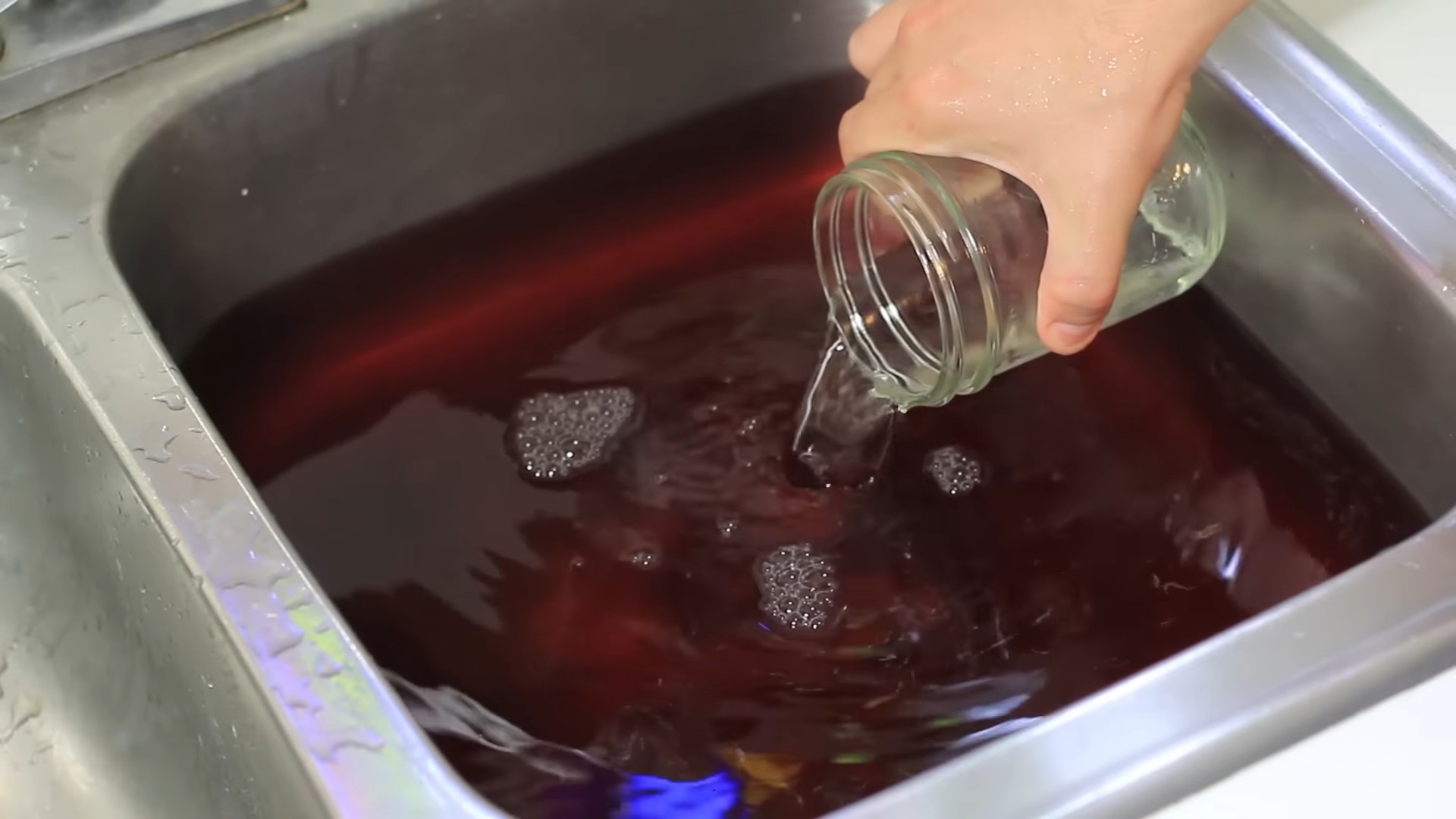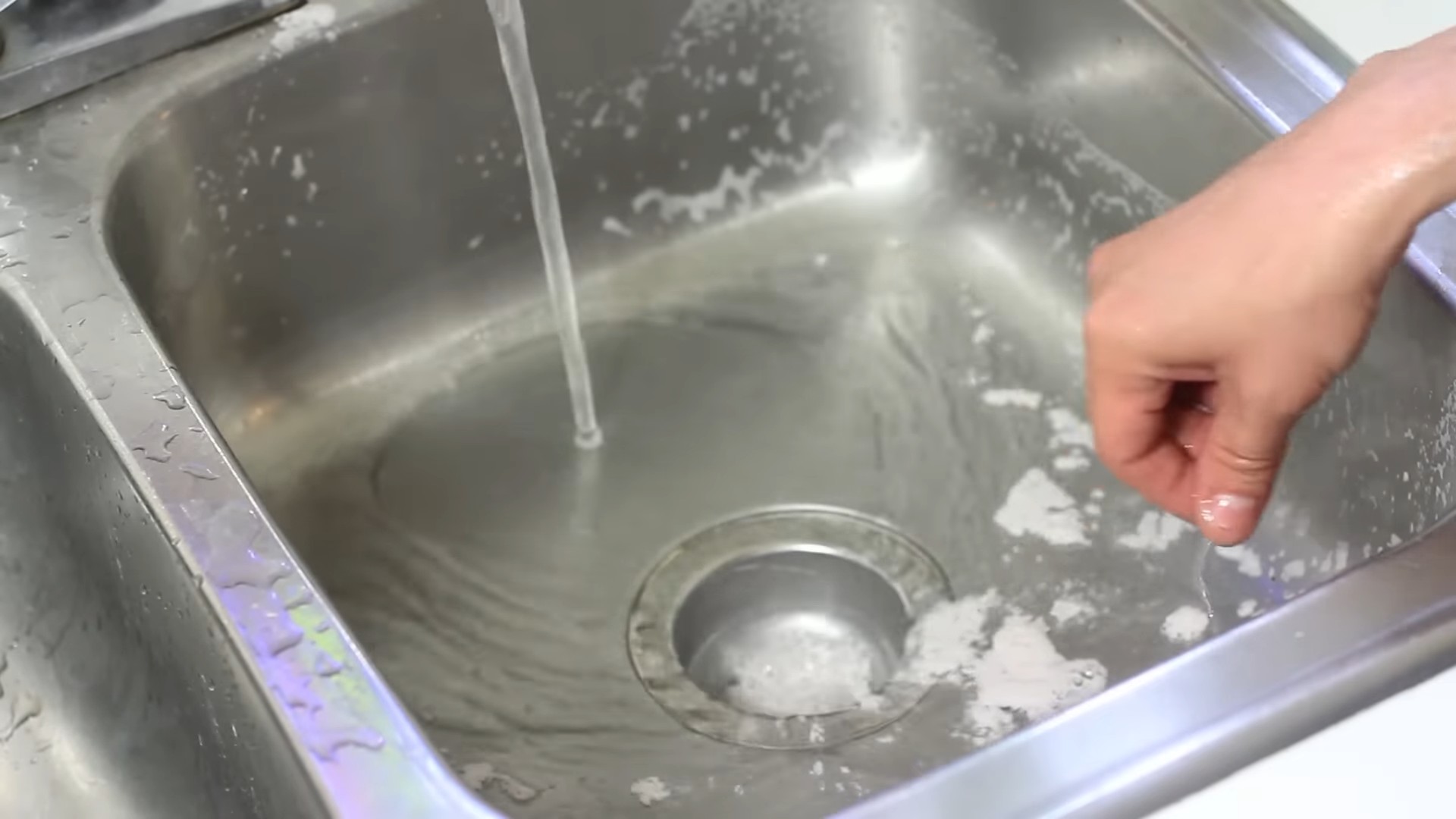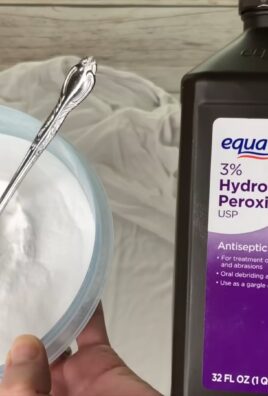White vinegar cleaning tricks – who knew such a humble pantry staple could be your secret weapon to a sparkling home? I’m constantly amazed by the versatility of white vinegar, and I’m excited to share some incredible DIY cleaning hacks that will save you money and reduce your reliance on harsh chemicals.
For generations, vinegar has been a go-to cleaning agent. Think back to your grandmother’s cleaning rituals – chances are, vinegar played a starring role! Its natural acidity makes it a powerful disinfectant and degreaser, and its affordability is simply unbeatable. In many cultures, vinegar was not just a cleaner, but also a symbol of resourcefulness and practicality.
Let’s face it, cleaning can be a chore, and the cost of specialized cleaning products can really add up. But what if I told you that you could achieve a cleaner, fresher home with just one simple ingredient? That’s where these white vinegar cleaning tricks come in. From tackling stubborn stains to deodorizing your refrigerator, these DIY solutions are effective, eco-friendly, and incredibly easy to implement. So, ditch the expensive cleaners and get ready to discover the magic of vinegar!

Unlocking the Cleaning Power of White Vinegar: My Favorite DIY Hacks
Okay, let’s dive into the wonderful world of white vinegar and how it can become your new best friend for cleaning! I’m going to share some of my absolute favorite DIY cleaning hacks using this inexpensive and incredibly versatile ingredient. Get ready to ditch those harsh chemicals and embrace the natural cleaning power of vinegar!
General Tips Before We Begin
* Always use distilled white vinegar: This is the standard type for cleaning and cooking. Avoid using other types of vinegar, like apple cider vinegar, unless specifically mentioned, as they can stain or leave a residue.
* Dilution is key: Vinegar is acidic, so diluting it with water is often necessary to prevent damage to surfaces. I’ll specify the dilution ratios for each hack.
* Test in an inconspicuous area: Before applying any vinegar solution to a large surface, always test it in a small, hidden area first to ensure it doesn’t cause discoloration or damage.
* Ventilation is important: Vinegar has a strong odor, so make sure to open windows or turn on a fan when cleaning with it. The smell dissipates quickly, but it’s best to be prepared.
* Don’t mix with bleach: This is a crucial safety tip! Mixing vinegar with bleach creates toxic chlorine gas, which is extremely dangerous.
Hack 1: Sparkling Clean Windows and Mirrors
Say goodbye to streaks and hello to crystal-clear windows and mirrors! This is one of the easiest and most satisfying vinegar cleaning hacks.
What you’ll need:
* Spray bottle
* White vinegar
* Water
* Microfiber cloth
Step-by-step instructions:
1. Prepare the cleaning solution: In the spray bottle, mix equal parts white vinegar and water (a 50/50 solution). For example, if you’re using a 16-ounce spray bottle, add 8 ounces of vinegar and 8 ounces of water.
2. Spray the surface: Lightly spray the vinegar solution onto the window or mirror. Don’t over-saturate it.
3. Wipe with a microfiber cloth: Use a clean, dry microfiber cloth to wipe the surface in a circular motion. Then, wipe in straight lines to remove any remaining streaks.
4. Dry (optional): If you notice any lingering streaks, use a fresh, dry microfiber cloth to buff the surface until it’s completely dry and streak-free.
Hack 2: Deodorizing and Cleaning Your Dishwasher
Your dishwasher works hard, and it deserves a little TLC! This vinegar hack will help remove odors, mineral buildup, and food residue, leaving your dishwasher sparkling clean.
What you’ll need:
* White vinegar
* Dishwasher-safe cup or bowl
Step-by-step instructions:
1. Empty the dishwasher: Make sure your dishwasher is completely empty before starting.
2. Fill the cup with vinegar: Pour one cup of white vinegar into a dishwasher-safe cup or bowl.
3. Place the cup in the top rack: Position the cup upright in the top rack of your dishwasher.
4. Run a hot cycle: Run the dishwasher on a hot cycle. You can use the normal cycle or a heavy-duty cycle.
5. Let it air dry: Once the cycle is complete, open the dishwasher door and let it air dry.
Hack 3: Removing Hard Water Stains from Showerheads
Hard water stains can make your showerhead look grimy and reduce water pressure. This vinegar soak will dissolve those mineral deposits and restore your showerhead to its former glory.
What you’ll need:
* White vinegar
* Plastic bag
* Rubber band or twist tie
Step-by-step instructions:
1. Fill the bag with vinegar: Pour enough white vinegar into the plastic bag to completely submerge the showerhead.
2. Attach the bag to the showerhead: Carefully position the bag over the showerhead, ensuring that the showerhead is fully immersed in the vinegar.
3. Secure the bag: Use a rubber band or twist tie to secure the bag to the showerhead, making sure it’s tight enough to prevent leaks.
4. Soak overnight: Let the showerhead soak in the vinegar overnight (or for at least a few hours).
5. Remove the bag and rinse: Remove the bag and discard the vinegar. Rinse the showerhead thoroughly with water to remove any remaining vinegar and loosened mineral deposits.
6. Wipe clean: Use a clean cloth to wipe the showerhead dry.
Hack 4: Cleaning Your Coffee Maker
Keep your coffee maker running smoothly and your coffee tasting its best by cleaning it regularly with vinegar. This will remove mineral buildup and prevent your coffee from tasting bitter.
What you’ll need:
* White vinegar
* Water
Step-by-step instructions:
1. Prepare the cleaning solution: Fill the coffee maker’s water reservoir with a mixture of equal parts white vinegar and water (a 50/50 solution).
2. Run a brewing cycle: Turn on the coffee maker and run a full brewing cycle.
3. Repeat with fresh water: After the vinegar solution has run through, discard the vinegar-water mixture and fill the reservoir with fresh water. Run two or three brewing cycles with fresh water to rinse away any remaining vinegar.
4. Clean the carafe: Wash the coffee pot (carafe) with soap and water.
Hack 5: Freshening Up Your Laundry
Vinegar can be a great addition to your laundry routine! It can help brighten clothes, remove odors, and soften fabrics.
What you’ll need:
* White vinegar
Step-by-step instructions:
1. Add vinegar to the wash: Add 1/2 cup of white vinegar to the washing machine during the rinse cycle.
2. Let the cycle complete: Allow the washing machine to complete the rinse cycle.
Benefits of using vinegar in laundry:
* Brightens clothes: Vinegar can help brighten white clothes and prevent colors from fading.
* Removes odors: It neutralizes odors, making it great for sweaty gym clothes or musty towels.
* Softens fabrics: Vinegar acts as a natural fabric softener, leaving your clothes feeling soft and comfortable.
* Removes soap residue: It helps remove soap residue from clothes, which can make them feel stiff.
Hack 6: Cleaning Your Microwave
Microwaves can get pretty gross with splattered food and grease. This vinegar steam cleaning method makes it easy to loosen the grime and wipe it away.
What you’ll need:
* Microwave-safe bowl
* White vinegar
* Water
* Sponge or cloth
Step-by-step instructions:
1. Prepare the vinegar solution: Fill the microwave-safe bowl with 1 cup of water and 2 tablespoons of white vinegar.
2. Microwave the solution: Place the bowl in the microwave and heat it on high for 5-10 minutes, or until the solution boils and the microwave is filled with steam.
3. Let it sit: Leave the bowl in the microwave for another 5 minutes to allow the steam to loosen the grime.
4. Wipe clean: Carefully remove the bowl (it will be hot!) and use a sponge or cloth to wipe down the inside of the microwave. The loosened food and grease should come off easily.
Hack 7: Cleaning and Disinfecting Cutting Boards
Cutting boards can harbor bacteria, so it’s important to clean and disinfect them regularly. Vinegar is a natural disinfectant that can help keep your cutting boards clean and safe.
What you’ll need:
* White vinegar
* Spray bottle or cloth
Step-by-step instructions:
1. Spray or wipe with vinegar: Spray the cutting board with white vinegar or wipe it down with a cloth soaked in vinegar.
2. Let it sit: Allow the vinegar to sit on the cutting board for a few minutes to disinfect it.
3. Rinse and dry: Rinse the cutting board thoroughly with water and dry it with a clean cloth.
Hack 8: Removing Stickers and Adhesive Residue
Struggling to remove a stubborn sticker or adhesive residue? Vinegar to the rescue!
What you’ll need:
* White vinegar
* Cloth or cotton ball
Step-by-step instructions:
1. Soak the area: Soak a cloth or cotton ball in white vinegar.
2. Apply to the sticker or residue: Place the soaked cloth or cotton ball over the sticker or adhesive residue and let it sit for several minutes (5-10 minutes should do the trick).
3. Peel or wipe away:

Conclusion
So, there you have it! Unlocking the power of white vinegar for a sparkling clean home is not just a trend; it’s a testament to the effectiveness of simple, natural solutions. We’ve explored a range of incredible white vinegar cleaning tricks that can transform your cleaning routine, saving you money and reducing your reliance on harsh chemicals. From banishing stubborn hard water stains in your bathroom to revitalizing your laundry and even tackling those grimy kitchen appliances, white vinegar proves its versatility time and time again.
But why is this DIY approach a must-try? Beyond the cost savings and eco-friendliness, using white vinegar offers a peace of mind. You know exactly what you’re cleaning with – a simple, readily available ingredient that’s safe for your family and pets when used correctly. No more deciphering complicated ingredient lists or worrying about lingering chemical residues.
Don’t be afraid to experiment and adapt these tricks to suit your specific needs. For instance, if you find the vinegar scent a bit strong, infuse it with citrus peels like lemon or orange for a more pleasant aroma. You can also add a few drops of your favorite essential oils, such as lavender or tea tree, for their added cleaning and disinfecting properties. For tougher stains, consider creating a paste of white vinegar and baking soda for extra scrubbing power. Remember to always test any cleaning solution in an inconspicuous area first to ensure it doesn’t damage the surface.
The beauty of these white vinegar cleaning tricks lies in their simplicity and adaptability. They empower you to take control of your cleaning routine and create a healthier, more sustainable home environment.
We wholeheartedly encourage you to give these DIY cleaning solutions a try. Start with one or two that resonate with you and see the difference for yourself. We’re confident that you’ll be amazed by the results. And most importantly, we want to hear about your experiences! Share your successes, your challenges, and any variations you discover in the comments below. Let’s build a community of savvy cleaners who are harnessing the power of white vinegar to create sparkling clean homes, one DIY trick at a time. Your insights could help others discover the magic of this versatile cleaning agent. So, grab your bottle of white vinegar and get ready to experience a cleaner, greener, and more affordable way to maintain your home!
Frequently Asked Questions (FAQs)
Is white vinegar safe to use on all surfaces?
While white vinegar is a fantastic cleaning agent, it’s essential to exercise caution on certain surfaces. Avoid using it on natural stone surfaces like marble, granite, and limestone, as the acidity can etch and damage them. It’s also not recommended for waxed wood furniture, as it can strip the wax finish. Be careful when using it on electronics, always unplugging them and using a damp (not soaking wet) cloth. Always test in an inconspicuous area first to ensure no damage occurs.
What is the best type of white vinegar to use for cleaning?
Plain, distilled white vinegar is the best choice for cleaning. It typically has an acidity level of around 5%, which is effective for cleaning without being overly harsh. Avoid using flavored vinegars or cleaning vinegars with added ingredients, as these may leave behind residues or stains.
How do I get rid of the vinegar smell after cleaning?
The vinegar smell is temporary and usually dissipates within a few hours. To speed up the process, you can open windows and ventilate the area. You can also add a few drops of your favorite essential oil to the vinegar solution to mask the scent. Another trick is to simmer a pot of water with citrus peels or spices like cinnamon and cloves to freshen the air.
Can I mix white vinegar with other cleaning products?
It’s generally not recommended to mix white vinegar with other cleaning products, especially bleach. Mixing vinegar with bleach creates chlorine gas, which is toxic and can be harmful to your health. Avoid mixing vinegar with ammonia-based cleaners as well, as this can create toxic fumes. When in doubt, use vinegar on its own or with water and baking soda.
How effective is white vinegar at disinfecting?
White vinegar has some disinfecting properties, but it’s not as powerful as commercial disinfectants like bleach. It can kill some bacteria and viruses, but it’s not effective against all pathogens. For surfaces that require thorough disinfection, such as those contaminated with blood or bodily fluids, it’s best to use a dedicated disinfectant. However, for everyday cleaning and sanitizing, white vinegar is a good natural option.
Can I use white vinegar to clean my coffee maker?
Yes, white vinegar is an excellent way to clean your coffee maker and remove mineral buildup. Fill the water reservoir with a solution of equal parts white vinegar and water. Run the coffee maker through a full brewing cycle. Then, run two cycles with plain water to rinse away any remaining vinegar. This will help keep your coffee maker clean and functioning properly.
How can I use white vinegar to clean my washing machine?
To clean your washing machine with white vinegar, pour two cups of white vinegar into the detergent dispenser. Run a normal wash cycle on the hottest water setting. This will help remove detergent residue, mildew, and odors from your washing machine. For top-loading machines, you can also add the vinegar directly to the drum.
Is white vinegar safe for septic systems?
Yes, white vinegar is generally safe for septic systems. It’s a natural and biodegradable substance that won’t harm the beneficial bacteria in your septic tank. Unlike harsh chemicals, white vinegar won’t disrupt the balance of your septic system.
Can I use white vinegar to remove hard water stains?
Absolutely! White vinegar is a highly effective solution for removing hard water stains from faucets, showerheads, and other surfaces. Soak the affected area in white vinegar for a few hours or overnight. For stubborn stains, you can create a paste of white vinegar and baking soda and apply it to the area. Scrub gently and rinse with water.
How often should I clean with white vinegar?
The frequency of cleaning with white vinegar depends on your individual needs and preferences. For everyday cleaning, you can use white vinegar as needed to wipe down surfaces and remove spills. For deeper cleaning tasks, such as cleaning your coffee maker or washing machine, you can do it once a month or as needed.




Leave a Comment